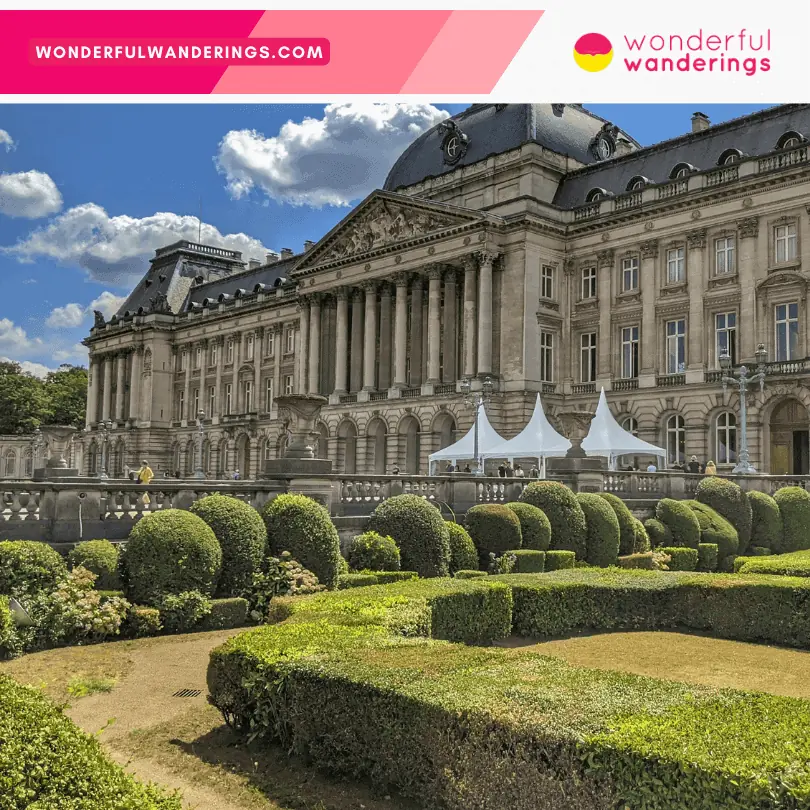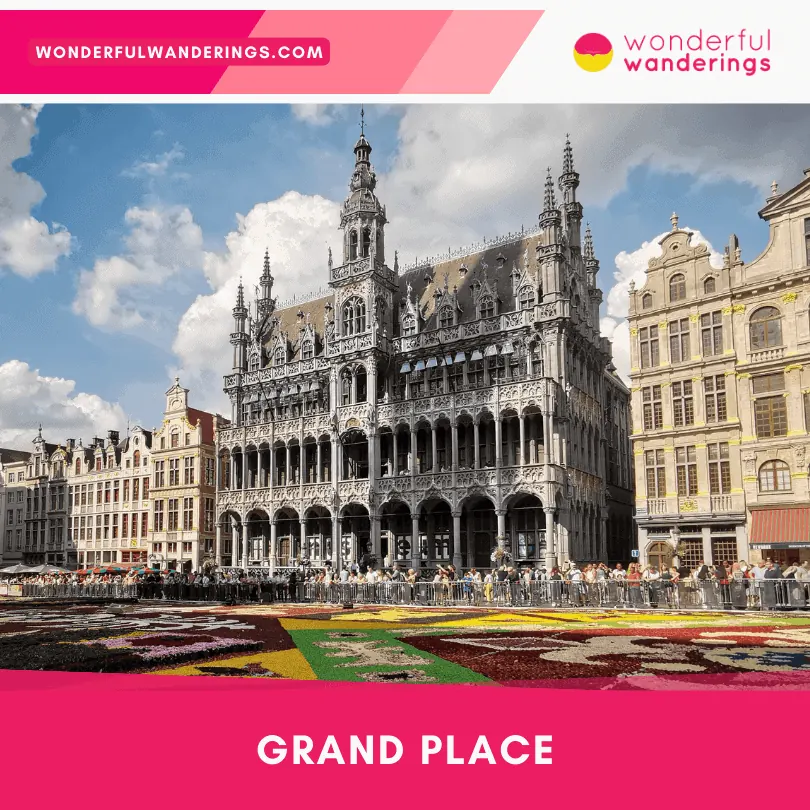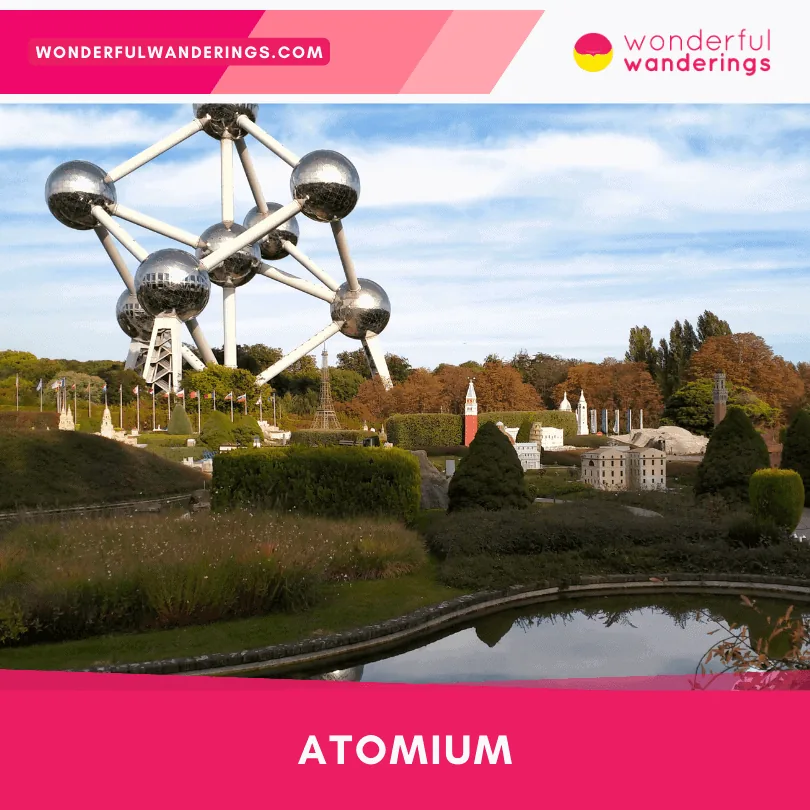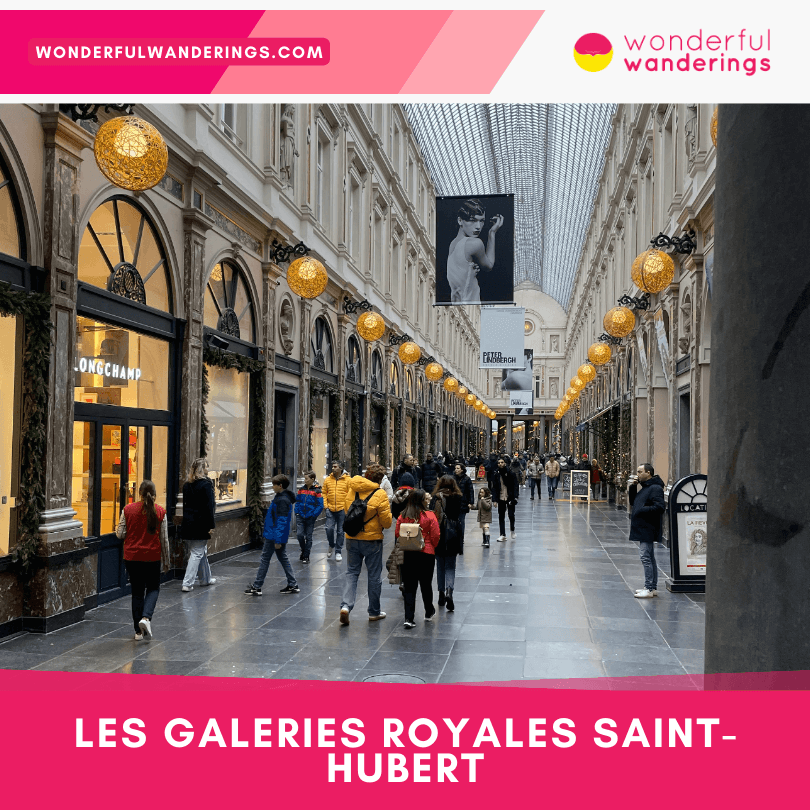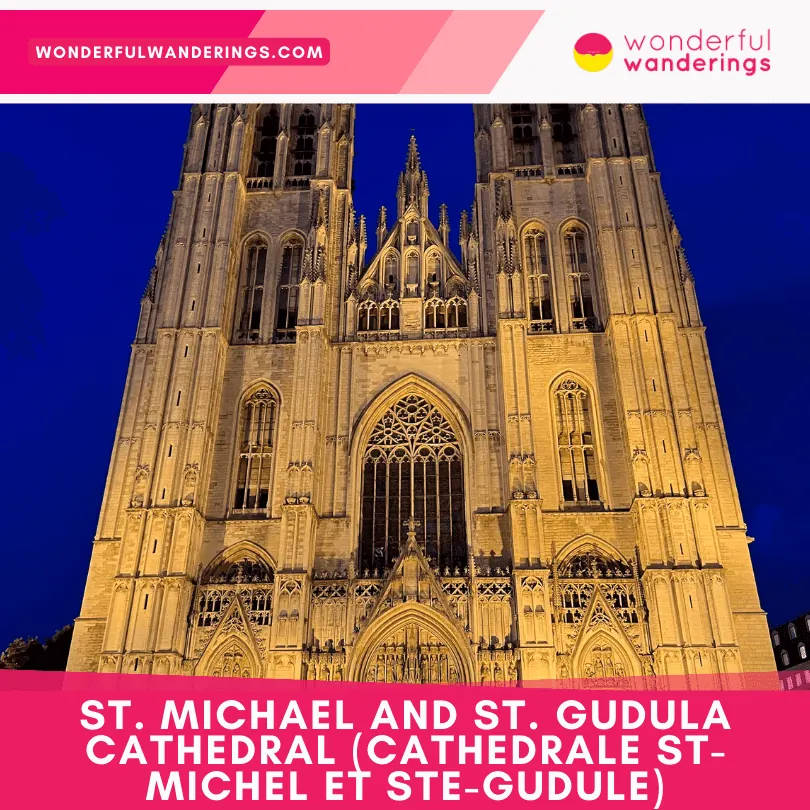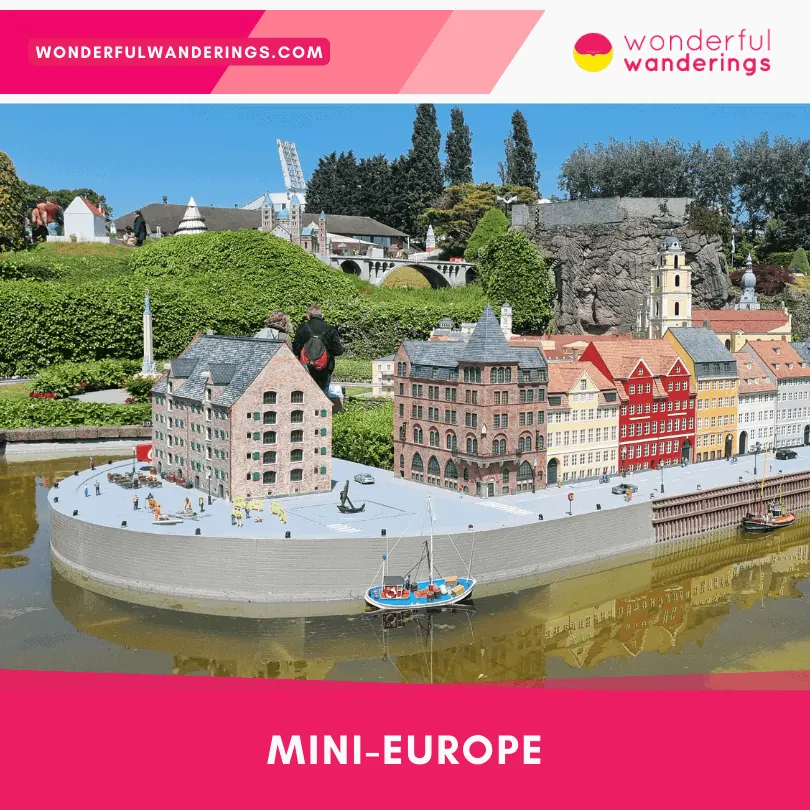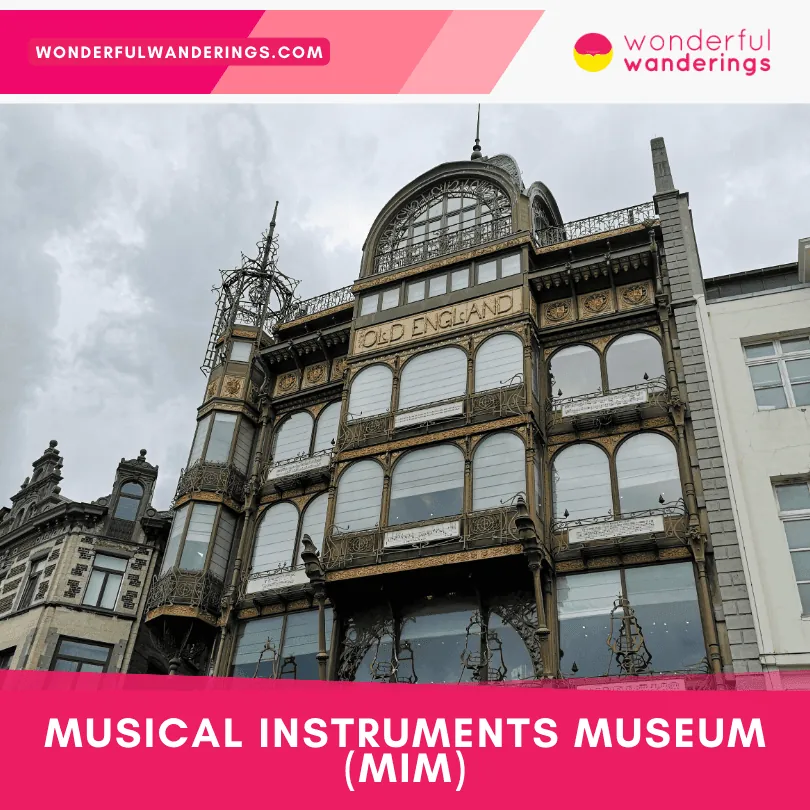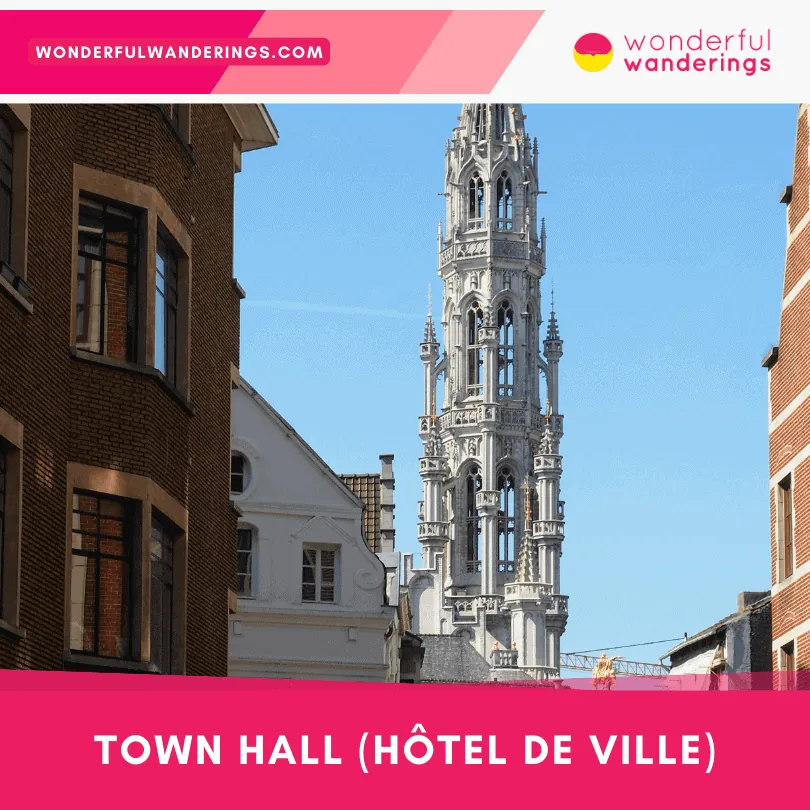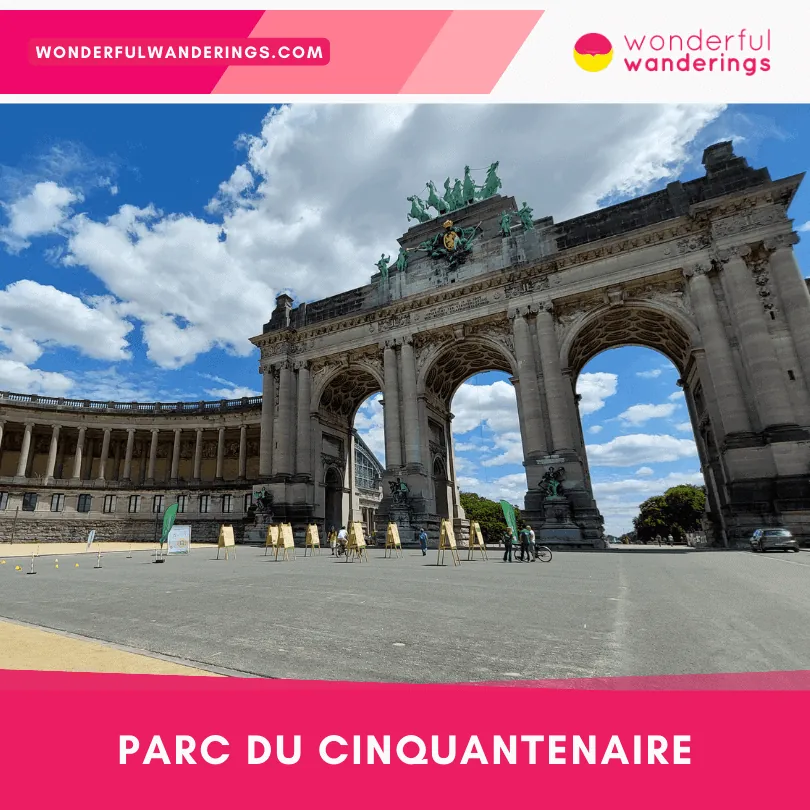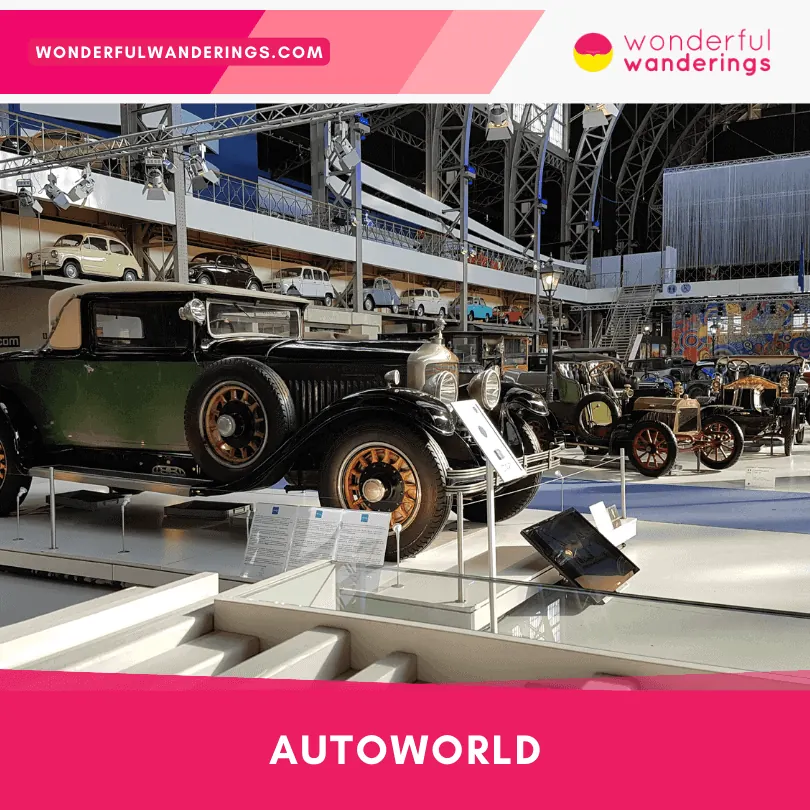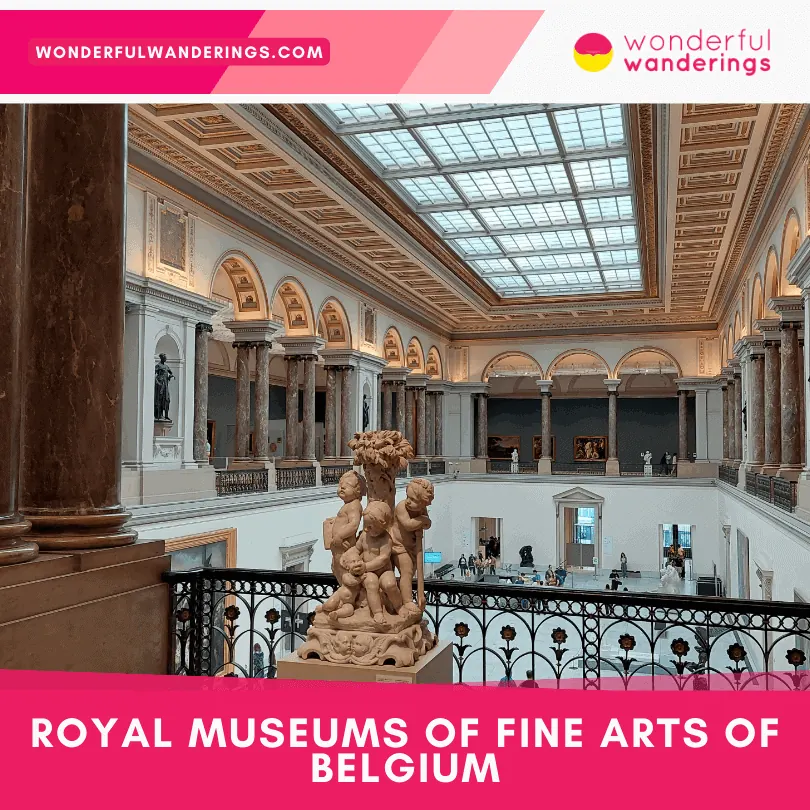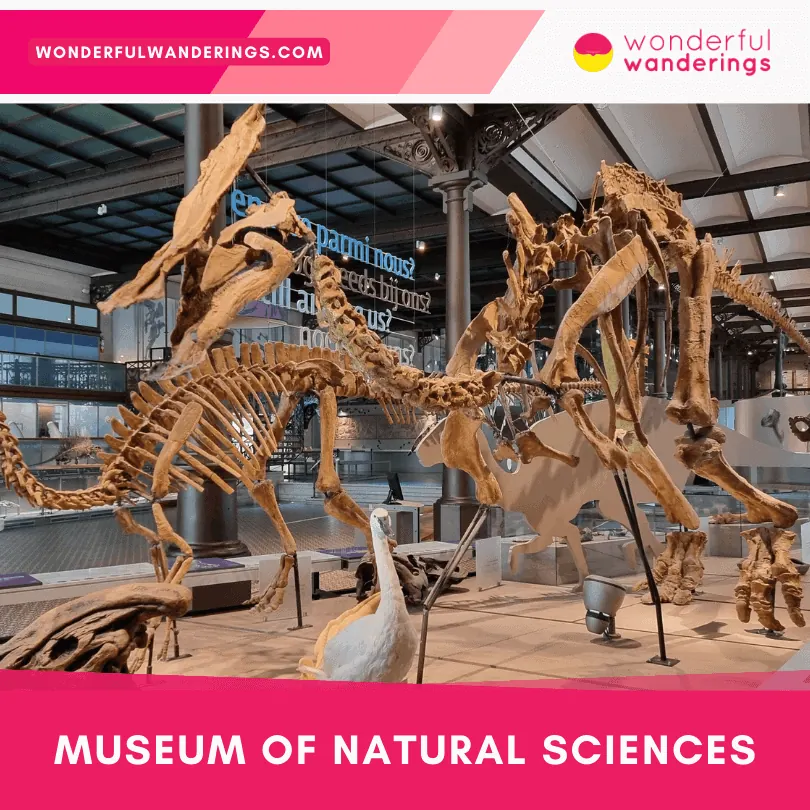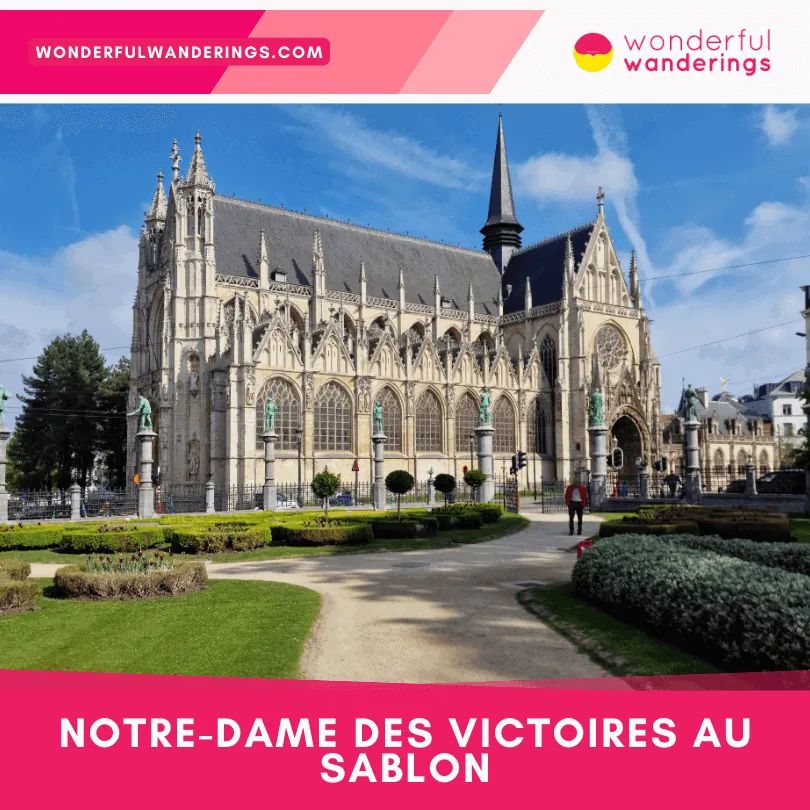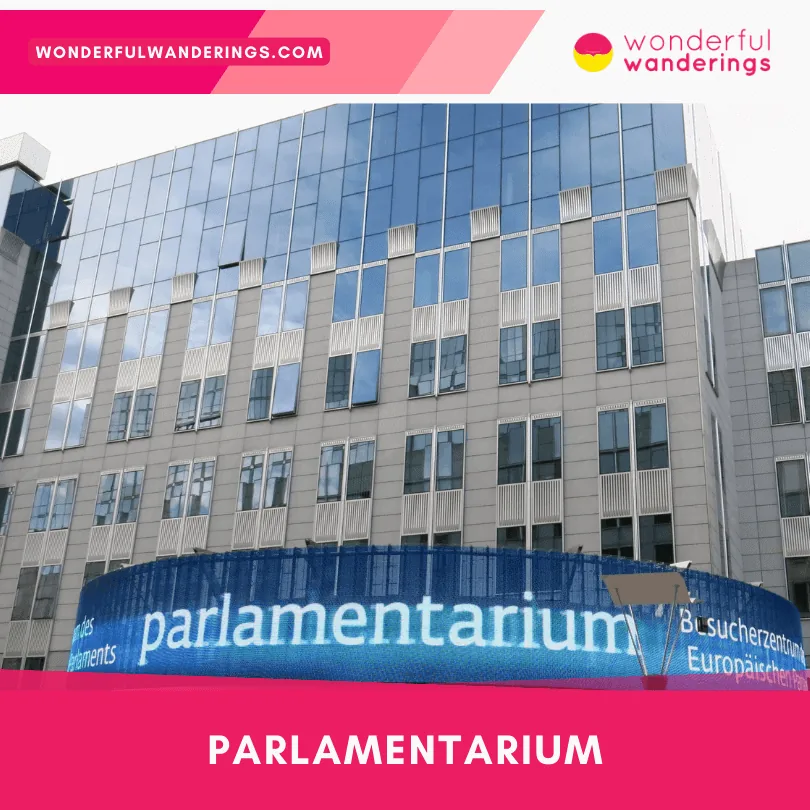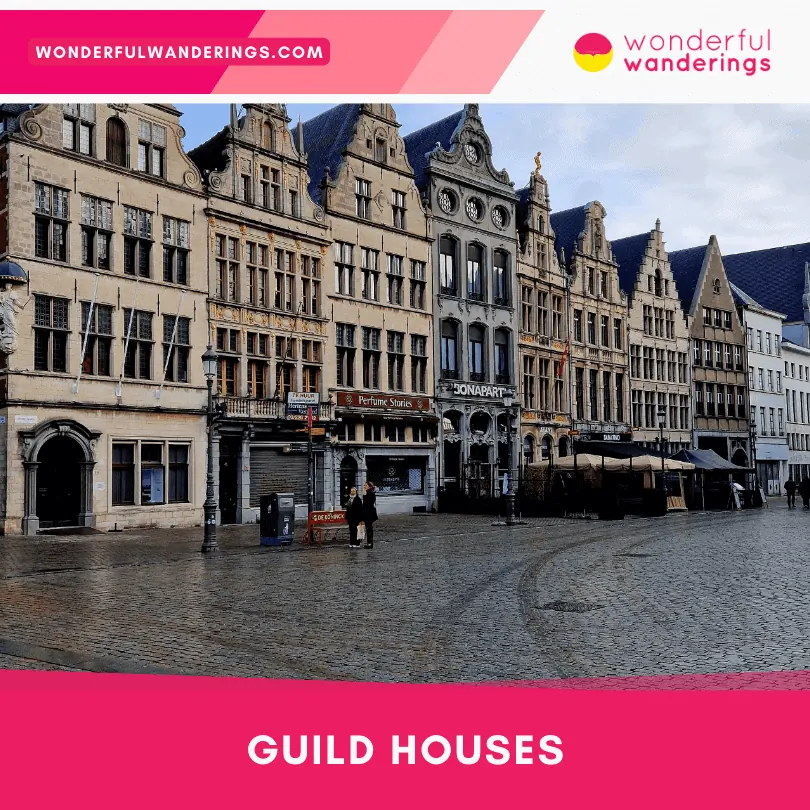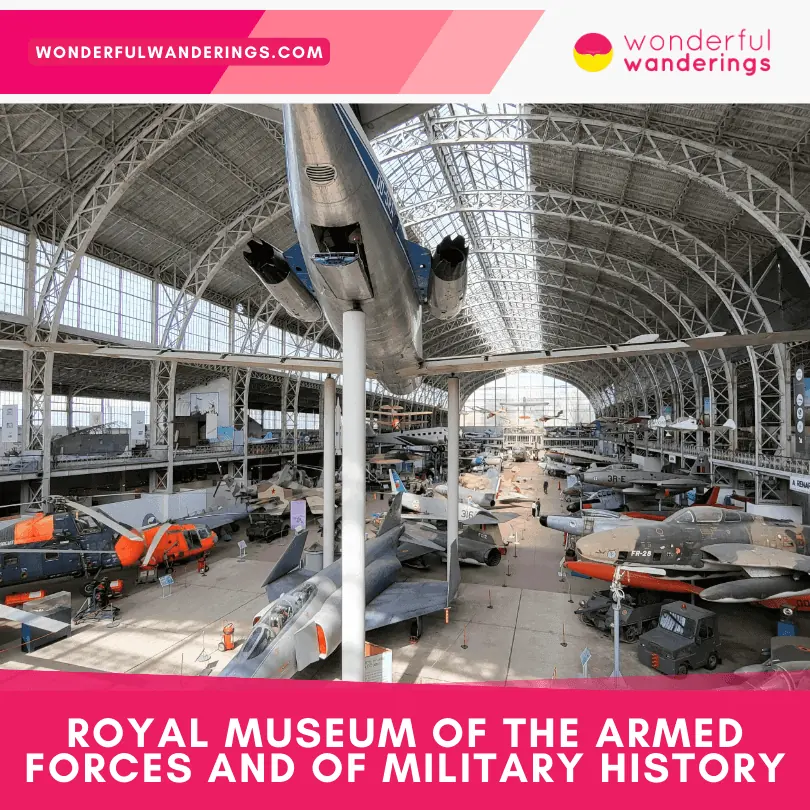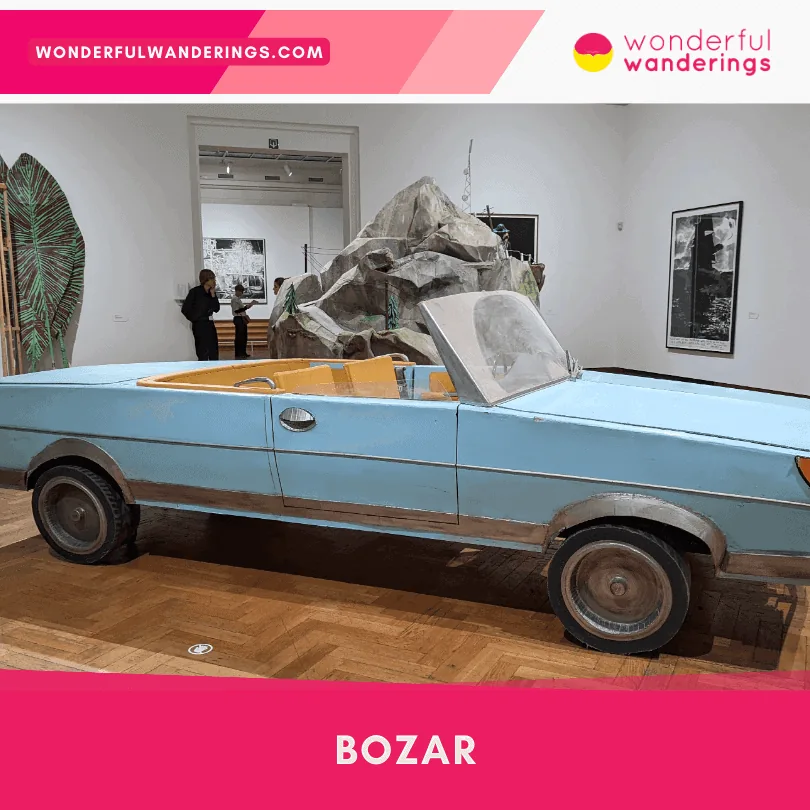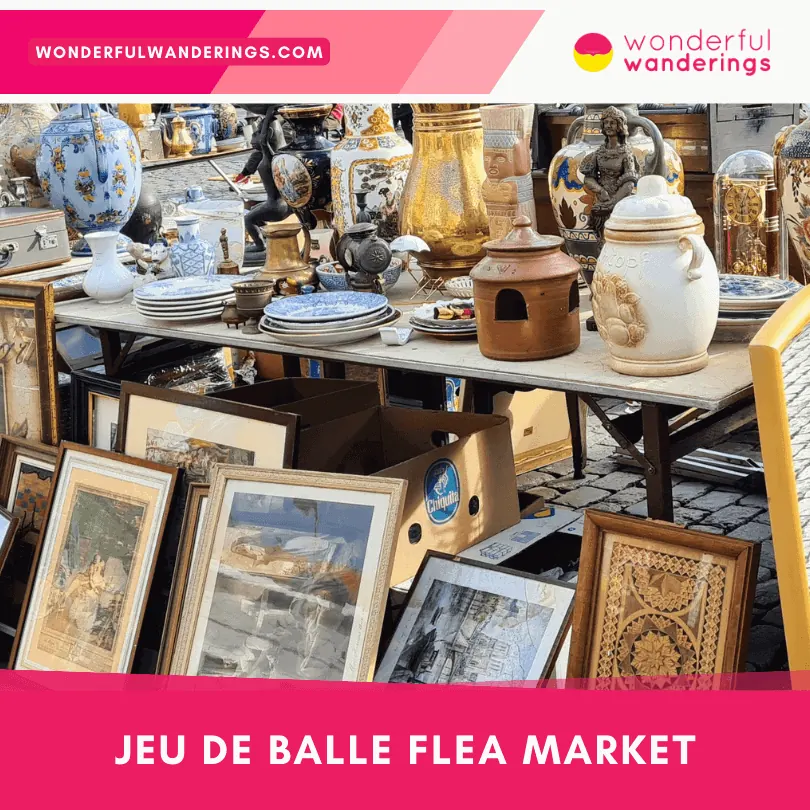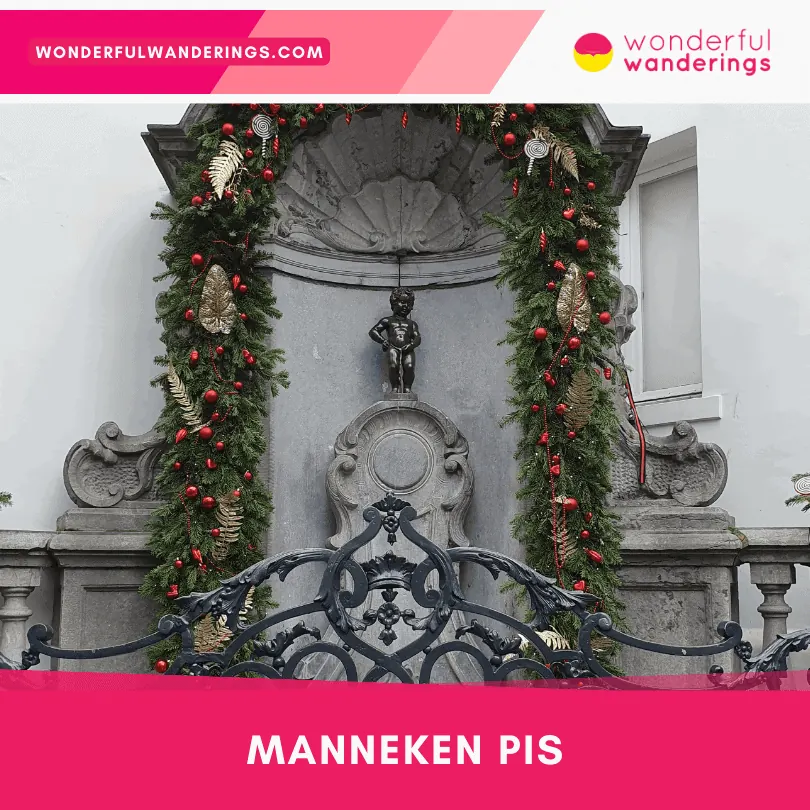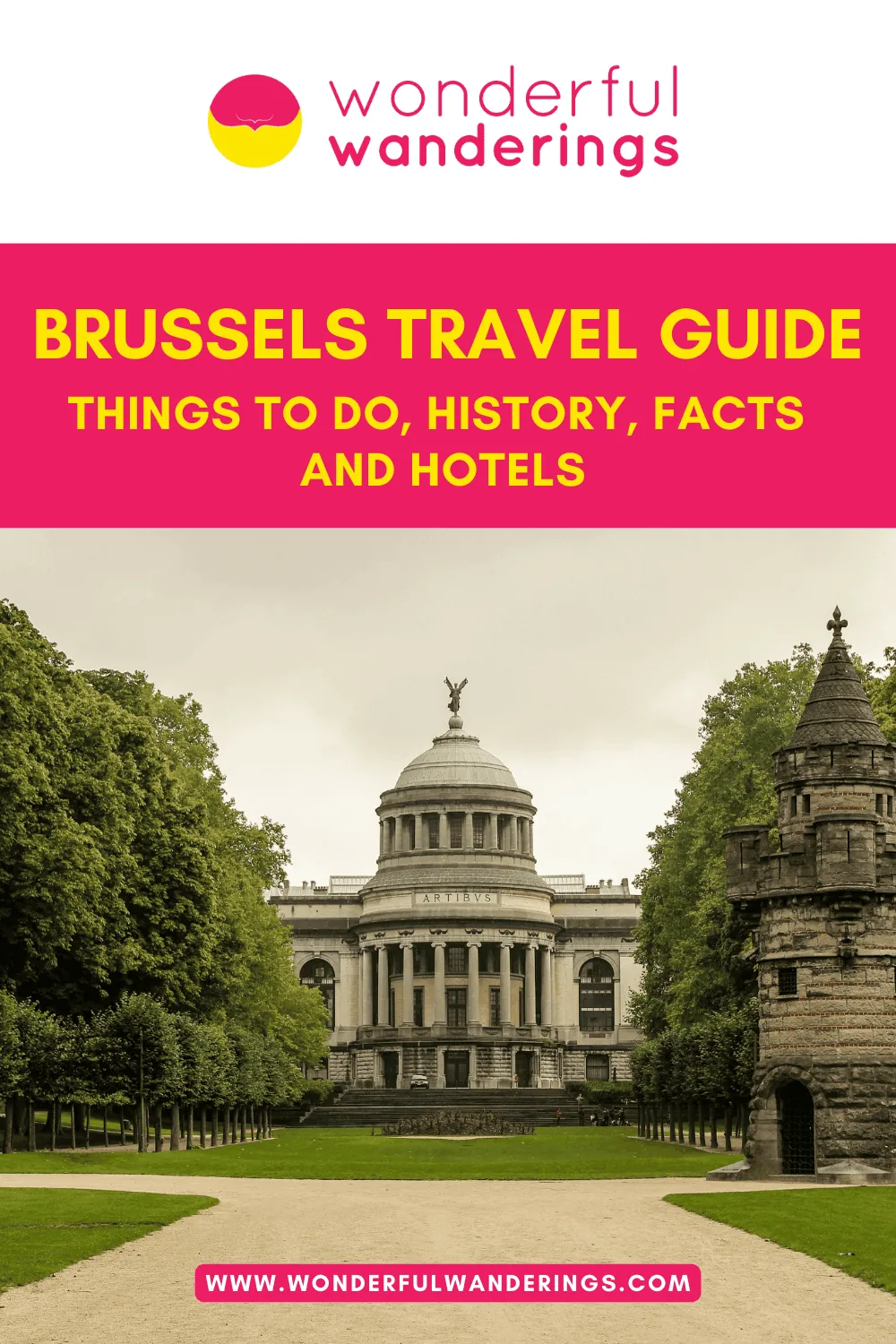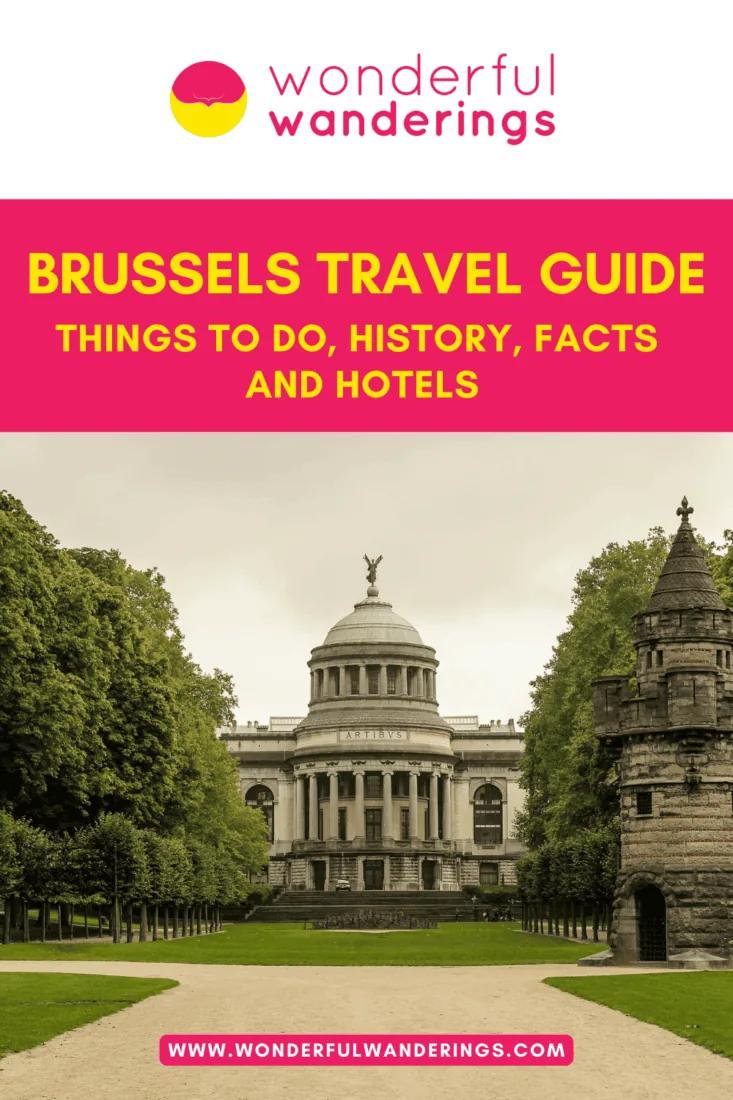Brussels, the capital city of Belgium, is an intriguing destination with much to offer. Brussels is pronounced as “bruh-suhls” or “bruh-suhlz” in English. The city is also known by its French name, “Bruxelles” (pronounced “bruh-kel”), and its Dutch name, “Brussel” (pronounced “bruh-suhl”). It is home to the iconic Atomium, a unique structure with futuristic spheres that offer panoramic views of Brussels. The Grand Place, a UNESCO World Heritage Site, is a historic square surrounded by ornate buildings, including the Gothic-style Brussels City Hall. The Manneken Pis, a small bronze statue of a urinating boy, is a quirky symbol of Brussels and a popular tourist attraction. The Royal Palace of Brussels, although not the residence of the king, is an impressive neoclassical building that can be visited during the summer months, and the Belgian Comic Strip Center showcases the country’s rich comic book heritage, including the adventures of Tintin and the Smurfs.
Exploring Brussels’ healthy culinary scene is a must, with opportunities to sample Belgian waffles, chocolate, and famous Belgian beers. The city offers excellent shopping options, ranging from high-end boutiques on Avenue Louise to flea markets like the Marolles district’s Place du Jeu de Balle. Art lovers can visit famous museums such as the Royal Museums of Fine Arts of Belgium, which houses an extensive collection of artworks from various periods. Taking a leisurely stroll through the streets of the historic neighborhoods, like the Marolles and Sablon, allows visitors to soak up the local atmosphere. Brussels hosts numerous festivals throughout the year, including the Flower Carpet event in the Grand Place and the Winter Wonders Christmas market.
Listed below are the best things to do in Brussels:
- Grand Place: Grand Place in Brussels is a UNESCO World Heritage site featuring beautifully preserved buildings from the late 17th century. Its architectural consistency is striking. It has hosted markets, celebrations, and political events for centuries. Visitors can explore the surrounding streets, lined with shops and cafes, and nearby attractions like the Atomium and Royal Palace.
- Atomium: The Atomium in Brussels is a famous symbol of the city and Belgium. Originally built for Expo 58, it underwent extensive renovations from 2004 to 2006. The futuristic structure offers opportunities for collaboration, branding, and filming. It serves as an exhibition space and cultural center, showcasing themes related to Belgium and digital arts. Atomium is visited by 600,000 travelers annually, it is one of Brussels’ top attractions, hosting private events and welcoming heads of state.
- Les Galeries Royales Saint-Hubert: Les Galeries Royales Saint-Hubert in Brussels is a historic and iconic shopping arcade. Its construction in 1846 revitalized the surrounding neighborhood, combining residential spaces and shops. The gallery features a Renaissance-inspired design with an elegant glass roof and breathtaking architecture. It offers a diverse shopping experience, from fashion boutiques to chocolatiers. The galleries also host cultural events and exhibitions, attracting both locals and tourists.
1. Grand Place
La Grand Palace is a historic square that has been designated as a UNESCO World Heritage site. It is a collection of buildings that were constructed mainly in the late 17th century. Its buildings showcase a notable level of architectural consistency and uniformity. The square is located in Brussels, the capital city of Belgium. It is a major tourist attraction, drawing visitors from around the world who come to admire its beauty and immerse themselves in its rich history. A variety of buildings, including townhouses, guild halls, and the Brussels City Hall, surround the square.
La Grand Place also serves as a venue for various events and festivals throughout the year. It has been a central gathering place for centuries, hosting markets, celebrations, and political gatherings. Visitors to La Grand-Place can explore the square’s surroundings and take in its grandeur. They can wander through its narrow streets, lined with shops, cafes, and restaurants. Visitors can also explore other attractions in the city, such as the Atomium, the Royal Palace, and the Museum of Fine Arts, just near the Grand Place.
2. Atomium
The Atomium, located in Brussels, Belgium, is a prominent symbol of the city and the country. It was originally built for Expo 58 but underwent major renovations between 2004 and 2006. Atomium’s futuristic design and international recognition offers various opportunities for collaboration and branding, such as renting parts of the building, co-branding initiatives, and filming opportunities. The Atomium also serves as an exhibition space and cultural center. Visitors can explore exhibitions that highlight themes related to Belgium and digital arts. It has become one of Brussels’ most iconic attractions and maintains a special relationship with the city. Following its restoration in 2006, the Atomium has reclaimed its place as an international symbol and icon. It offers a unique visitor experience and serves as a venue for organizing events and conferences.
The Atomium attracts 600,000 people annually, with a record of 4,700 visitors in a single day. It hosts over 100 private events each year, attended by tens of thousands of participants. It welcomes numerous heads of state annually, both privately and officially. The Atomium also serves as a backdrop for photo shoots and is featured in national and international broadcasts. When visiting the Atomium, there are various ticket options available. The prices range depending on the type of ticket and visitor category. For individual visitors, prices start at 8.5€ ($7.84, £6.85) for children under 115 centimeters (3 feet and 9 inches), 16€ ($14.75, £12.9) for adults, and 14€ ($12.91, £11.29) for seniors. Combined tickets are available, offering access to other attractions such as Design Museum Brussels and Mini-Europe.
3. Les Galeries Royales Saint-Hubert
Les Galeries Royales Saint-Hubert, located in the heart of Brussels, Belgium, is a historic and iconic shopping arcade. Its inauguration on June 20, 1847, was attended by King Leopold I and marked a new era for the city. Designed by architect Jean-Pierre Cluysenaer, the construction of this impressive structure began in 1846 and was completed in 1847. Galeries Royales Saint-Hubert’s length is 200 meters (656 feet) and consists of three interconnected sections: Galerie de la Reine (Queen’s Gallery), Galerie du Roi (King’s Gallery), and Galerie des Princes (Princes’ Gallery).
Les Galeries Royales Saint-Hubert played a pivotal role in revitalizing and transforming the surrounding neighborhood, which was once a densely populated area. The gallery’s construction aimed to combine residential spaces, shops, cultural venues, and leisure areas, reflecting Cluysenaer’s vision. It showcases a magnificent Renaissance-inspired design characterized by its elegant arched glass roof supported by a series of self-supporting arches. The roof is filled with fish-scale tiles, allowing for better ventilation and preventing condensation.
Les Galeries Royales Saint-Hubert has stood the test of time and remains a hub for shopping and leisure. It houses various boutiques, offering visitors a wide range of products and services. From fashion boutiques to jewelry stores, bookshops to chocolatiers, the galleries provide a diverse shopping experience. Visitors can explore the shops, stroll along the arcade, and enjoy themselves in the unique atmosphere of this historical landmark. Les Galeries Royales Saint-Hubert also serves as a cultural and entertainment destination. The galleries host various events, exhibitions, and performances throughout the year, attracting locals and tourists.
Access to Les Galeries Royales Saint-Hubert is convenient, with several transportation options available. It is located at 5 Galerie du Roi, and public transportation can easily reach it, including trams, buses, and the metro. The Central Station and Bourse are the nearest metro stations, providing convenient connections to other parts of the city. For those traveling by car, parking facilities are available nearby.
4. St. Michael and St. Gudula Cathedral (Cathedrale St-Michel et Ste-Gudule)
St. Michael and St. Gudula Cathedral, also known as the Cathedral of St. Gudula, is a medieval cathedral in the heart of Brussels, Belgium. It is dedicated to St. Michael and St. Gudula, the city’s patron saint. The construction of the cathedral began in the 11th century, replacing an earlier chapel that stood on the same site. The cathedral’s architecture is predominantly Gothic, with some newer elements. It is known for its size, measuring 110 meters (360 feet) in length, 30 meters (98 feet) in width (50 meters or 160 feet at the choir level), and 26.5 meters (87 feet) in height. The entrance towers reach a height of 69 meters (226 feet). The cathedral’s exterior features a striking main facade with three portals and two 64-meter-high (210-foot) towers. The towers, built between 1470 and 1485, are attributed to Jan Van Ruysbroeck and contribute to the cathedral’s distinctive skyline. The cathedral is constructed primarily with stone from the Gobertange quarry, located 45 kilometers (28 miles) southeast of the cathedral. The cathedral’s classic plan consists of a nave with a three-bay choir ending in a five-sided apse surrounded by an ambulatory. Over the centuries, the cathedral underwent various modifications and additions. The main structure was completed in the 16th century, with the interior being frequently modified in subsequent years. The church features late Gothic elements and chapels, while its decorative elements, including some windows in the choir, were restored in the 19th century.
St. Michael and St. Gudula Cathedral are known for their musical components, particularly its two organs and impressive church bells. The cathedral has been designated as a protected heritage site since 1936. In 1962, it was elevated to the status of a cathedral and became the co-cathedral of the Metropolitan Archbishop of Belgium, along with the Cathedral of St. Rumbold in Mechelen. As the national church of Belgium and the official seat of the Archbishop, St. Michael, and St. Gudula Cathedral frequently hosts important ceremonies such as royal weddings, state funerals, and other official events.
The surroundings of St. Michael and St. Gudula Cathedral have changed since the mid-20th century due to the construction of the Brussels Central Station. It now stands on the Parvis Sainte-Gudule/Sinter-Goedelevoorplein, a spacious forecourt east of the Boulevard de l’Impératrice/Keizerinlaan. The cathedral is easily accessible by public transportation, including buses and metro lines. The interior of St. Michael and St. Gudula Cathedral showcases the grandeur of Gothic design. The cathedral’s main highlights include its magnificent stained glass windows, intricate sculptures, and ornate chapels. The architectural style creates a sense of awe and reverence, providing visitors with a glimpse into the religious and historical significance of the cathedral.
5. Mini-Europe
Mini-Europe is a park located in Brussels, Belgium that showcases a unique miniature world of European wonders. The park features over 350 meticulously crafted replicas of famous monuments from the 27 European Union member states, including the United Kingdom. These architectural marvels are reproduced at a scale of 1/25, allowing visitors to admire their intricate details. Walking through Mini-Europe, visitors can explore a diverse array of landmarks, from the Cathedral of Santiago de Compostela to the Grand Palace of Brussels. As visitors stroll through the park, they’ll encounter bonsai trees, flower-filled groves, and dwarf trees that enhance the surrounding’s beauty. The attention to detail is remarkable, with thousands of lifelike figurines and animations bringing the miniature world to life. Visitors can witness the eruption of Mount Vesuvius or marvel at the takeoff of the Ariane rocket. Mini-Europe aims to foster exchange and evoke emotions during a visitor’s visit, which lasts between one and a half to two hours. It has welcomed over 10 million visitors who have explored its trails. The park’s commitment to artistry is unparalleled, with each monument meticulously selected for its architectural quality and European symbolism. The level of craftsmanship is evident in the intricate replicas. For instance, the Cathedral of Santiago de Compostela required an astonishing 24,000 hours of work to recreate. The Grand Palace of Brussels statues are meticulously painted with real gold leaves. In the Seville arena, 6,000 figurines were carefully placed to recreate the atmosphere of a bullfight. The replica of Big Ben stands at an impressive height of 4 meters (13 feet).
Mini-Europe offers practical information for visitors. The park is open every day from 10:00 am to 6:00 pm, with the last entrance at 5:00 pm. Admission rates are 19 € ($22, £16) for adults and 13.50 € ($16, £12) for children under 12 years old. Children below 115 cm (3 feet and 9 inches) in height can enter for free. Visitors can make arrangements in advance if planning to visit with a group of at least 20 people. However, group tickets and tickets for school groups (minimum 15 persons) and groups of persons with disabilities (minimum 10 persons) are non-exchangeable and non-refundable. Visitors have the option to purchase their Mini-Europe tickets in advance on their website and receive a promo code that grants a 50% reduction on the train ticket to Brussels, but it is not valid for combination tickets.
6. Musical Instruments Museum (MIM)
The Musical Instruments Museum (MIM) in Brussels, Belgium, is a known destination for music lovers and cultural explorers. Housed in the splendid Old England building, an exquisite example of Art Nouveau architecture, the MIM has a world-famous collection of musical instruments. The history of the MIM dates back to 1877, when the collection was established with the purpose of showcasing early musical instruments to students. Over the years, the collection grew significantly, thanks to the efforts of dedicated curators and generous donors. The MIM’s collection now comprises over 8,000 instruments, making it one of the largest collections worldwide. The museum’s location in the former Old England building, constructed in 1899, enhances its historical beauty. The MIM is on Rue Montagne de la Cour/Hofberg, adjacent to the Mont des Arts and across from the Royal Palace. The museum is easily accessible by public transportation.
Visiting the MIM is a delightful experience, with practical information provided to ensure a pleasant visit for all guests. Visitors have the option to purchase tickets per time slot at the reception desk or online. Printing the tickets in advance or having them ready on a mobile device is recommended. The admission fee is 15 € ($17, £13) for adults aged 19 to 64, and discounted rates are available for seniors, students, teachers, and unemployed individuals. Children and adolescents between 0 to 18 years old and certain cardholders can enjoy free admission. Multimedia guides are included in the entrance fee, allowing visitors to enhance their experience. Photography is permitted in the galleries, but flash photography is not allowed. Lockers are provided for convenience, and for larger items, there is an unattended cloakroom on the ground floor. The museum is fully accessible to visitors with reduced mobility, ensuring inclusivity. The museum shop is accessible to everyone free of charge, offering a range of souvenirs and musical treasures. However, the restaurant on the top floor is currently closed for renovation.
The MIM’s opening hours provide enough time for exploration. The museum welcomes visitors from 09:30 am to 05:00 pm from Tuesday to Friday, while on Saturdays, Sundays, and public holidays, the opening hours are from 10:00 am to 05:00 pm. Ticket sales end one hour before closing time, at 04:00 pm, while the museum closes at 05:00 pm, and the galleries close at 4:45 pm. The museum closes on December 24th and 31st at 03:00 pm, with the last ticket sales at 02:00 pm.
7. Town Hall (Hôtel de Ville)
The Town Hall (Hôtel de Ville) is a historic civic building located in the city center. It serves as the administrative center for the local government and is an important symbol of Brussels’ civic pride. The Town Hall’s architecture features a striking Gothic style, with tall spires and intricate detailing. It is a popular tourist attraction, allowing visitors to admire its impressive façade and explore its interior, which includes grand halls and ornate rooms. The building also hosts official ceremonies and events, contributing to the city’s cultural and civic life.
The Town Hall’s central location makes it easily accessible to visitors. It is in the heart of Brussels, near other notable landmarks such as the Grand Place. The nearest metro station, Bourse, provides convenient transportation connections. Admission to the Town Hall is free, allowing visitors to appreciate its historical and architectural significance. It offers an opportunity to delve into Brussels’ rich heritage and discover the Town Hall’s important role in the city’s governance and civic traditions.
8. Parc du Cinquantenaire
Parc du Cinquantenaire is a large urban park in Brussels. It spans an expansive area and offers visitors a variety of recreational opportunities. The park features wide open spaces, tree-lined paths, and landscaped gardens, making it ideal for leisurely walks or picnics. The centerpiece of the park is the monumental Triumphal Arch, which enhances a sense of grandeur and historical significance. The Parc du Cinquantenaire also houses several museums, including Autoworld and the Royal Museum of the Armed Forces and Military History. The Parc du Cinquantenaire is easily accessible and located not far from the city center. It is well-connected by public transportation, with nearby metro and tram stations providing convenient access. The park is open to the public, and admission is free, allowing visitors to enjoy its serene atmosphere and explore its attractions at their own pace.
9. Autoworld
Autoworld is a national car museum housed in a historic building within the Parc du Cinquantenaire. The Museums features a permanent display of over 300 vehicles amd visitors can explore the evolution of the automobile industry from as early as 1896. The museum offers a fascinating journey through time, covering significant periods such as La Belle Époque, World War I, the Golden Twenties, the thirties, World War II, and the fifties, up to the present day. Autoworld has featured an impressive collection of cars, trucks, motorcycles, and even animal-drawn vehicles since its establishment in 1986. The exhibits include from horse-drawn carriages to classic sports cars from the 1960s. One of the highlights of Autoworld is the Belgium at Autoworld section, which pays tribute to the roots and history of the Belgian car industry. It also showcases cars owned by the Belgian Royal Family, micro and bubble cars, and exhibits dedicated to car design. Throughout the year, the museum hosts temporary exhibitions that delve into various automotive themes, ensuring that there is always something new and exciting to discover. These exhibitions attract a wide audience, drawing car lovers and history buffs.
Autoworld is easily accessible for visitors within the Parc du Cinquantenaire. Its opening hours are Monday to Thursday from 10:00 am to 05:00 pm and Saturdays and Sundays from 10:00 am to 06:00 pm, while it is closed on January 1st and December 25th. Admission prices at Autoworld are 15 € ($17, £12) for Adults, 7 € ($8, £6) for Children aged 6 to 11, 11 € ($13, £9) for Students, and 13 € ($15, £11) for Senior citizens, while Children under 6 can enter for free. It also offers a museum shop where visitors can find automotive-related souvenirs and a café to grab a refreshment during their visit.
10. Royal Museums of Fine Arts of Belgium
The Royal Museums of Fine Arts of Belgium offers a diverse and extensive collection of artwork spanning from the 15th to the 21st centuries. The museums showcase Western art, including works by Belgian and former Southern Netherlands artists. The collection primarily consists of paintings, sculptures, drawings, and prints, with some decorative arts, furniture, and a small number of non-European works. The online catalog features over 10,000 representative pieces from the collection, though it is only available in Dutch or French.
The Royal Museums of Fine Arts of Belgium’s history dates back to 1803, founded as the Museum of Fine Arts of Brussels. The collection grew over time through various acquisitions, including works seized during the French Revolutionary period and those obtained from Belgian artists. Today, the Royal Museum contains over 20,000 drawings, sculptures, and paintings, making it the most popular art institution and the most visited museum complex in Belgium. The museums consist of six distinct institutions: the Old Masters Museum, the Fin-de-Siècle Museum, the Magritte Museum, the Wiertz Museum, the Meunier Museum, and the Modern Museum. Each museum offers a unique perspective on art history and showcases different periods and styles. Prices vary depending on the type of ticket and the specific museums visitors wish to explore. The Fine Arts: Old Masters + Fin-de-Siècle Combi ticket costs €10 ($11, £9), while the Fine Arts + Musée Magritte Museum ticket costs €15 ($17, £14). Discounts are available for seniors, students, people with disabilities, and other eligible groups, while Thalys passengers, children, and youth not in a school group and certain individuals with valid documents are granted free admission.
11. Museum of Natural Sciences
The Museum of Natural Sciences is a famous institution dedicated to studying natural history and exploring our planet’s species. It was established in 1846, was part of the Royal Belgian Institute of Natural Sciences (IRSNB), and offers visitors a wealth of educational opportunities. The museum’s collection is vast, with over 38 million specimens that showcase the diversity of life on Earth. One of the main highlights of the museum is its dinosaur exhibition, which is widely recognized as one of the most impressive in Europe. The dinosaur hall, occupying the largest space of its kind on the continent, features an array of fossilized skeletons, including the famous Iguanodon specimens discovered in 1878 in a coal mine in Bernissart, southern Belgium. The museum also offers a comprehensive exploration of species evolution with over 600 fossils and 400 animal displays, where visitors can observe how various creatures have adapted to changes in the climate throughout history. The collection includes contemporary animals that still roam our planet, such as bears, lizards, foxes, and elephants, and species that have been extinct for thousands of years. The Museum of Natural Sciences also houses the Mammal Gallery, showcasing recent and extinct mammals, including diverse species. Visitors can explore the North and South Pole exhibit, which offers a unique perspective on the distinct environments found at these remote locations, with a glass tunnel that allows visitors to observe the contrasting worlds of the Arctic and Antarctica.
For those fascinated by marine life, the Whale Hall is a must-visit. It features the skeletons of whales, dolphins, walruses, seals, and other marine creatures. It also sheds light on these majestic animals’ economic significance and historical interactions with human societies, along with another intriguing display, the Shell Gallery, which houses a tropical aquarium and an extensive collection of shells. It is one of the largest shell collections globally, with over 9 million specimens gathered by dedicated researchers. It regularly hosts temporary exhibitions that offer interactive and engaging experiences for visitors of all ages. The Museum of Natural Sciences houses a research department dedicated to advancing human understanding of natural phenomena and contributes to ongoing scientific studies. The museum also has a public exhibit department that ensures visitors have access to the latest scientific findings and discoveries.
12. Notre-Dame des Victoires au Sablon
Notre-Dame des Victoires au Sablon, also known as Onze-Lieve-Vrouw ter Zege op de Zavel, is a religious building located on the outskirts of Brussels, Belgium. It has a historical background dating back to the 14th century. The church gained prominence when a miraculous statue of the Virgin Mary arrived in 1348, attracting devoted followers and leading to the construction of a new sanctuary in the 15th century. The construction process spanned over a century, with the choir completed in 1435 and the north transept likely finished around 1450. However, the construction was interrupted due to political instability following the death of Duke Jean I in the 15th century. It resumed towards the end of the century, resulting in a nave with seven bays, with the planned tower for the last two bays being never built.
During the 16th century, Notre-Dame des Victoires au Sablon faced challenges as it was sacked by iconoclasts, resulting in the destruction of the statue of the Virgin Mary. However, from 1512 to 1515, the church received an artwork called “Le Retable de Saint Thomas et Saint Matthieu” by Bernard van Orley, donated by the Masons and Carpenters’ Guild. In the 17th century, two chapels were constructed by the Tour and Taxis family, namely the Sainte-Ursule Chapel to the north of the choir and the Saint-Marcou Chapel to the south. The French regime spared the church from anti-religious zeal during the revolution, and it was temporarily closed but later reopened as a subsidiary of the Cathedral of St. Michael and St. Gudula. In the 19th century, the church underwent restoration work after being freed from surrounding buildings. Architect Jean-Baptiste Bethune initiated restoration plans in 1870, but they were met with resistance due to their radical nature. Consequently, more modest repairs were undertaken, such as restoring the side aisles and reopening a previously blocked window on the facade. The restoration work continued under the direction of Ernest Van Humbeek and his son Victor from 1895 to 1912. They transformed the church, adding spires, pinnacles, and openwork balustrades. They also incorporated perpendicular arches and buttresses with pinnacles. From 1917 to 1937, the architect Victor Horta oversaw the installation of 57 statues by 27 different sculptors.
The interior of Notre-Dame des Victoires au Sablon features a choir illuminated by eleven stained glass windows, each measuring 14 meters (45 feet) in height. The lancet windows are separated by painted trilobed arcades, while the lower sections of the windows display painted trefoil arches depicting various saints.
13. Parlamentarium
The Parlamentarium is Europe’s largest parliamentary visitors center located in Brussels, Belgium. It offers a unique opportunity to explore the world of the European Parliament and has already welcomed over 2 million visitors. The center provides a variety of engaging and informative activities that showcase the path toward European cooperation and the important role of the European Parliament in addressing today’s challenges. Visitors are guided by multimedia guides in 24 languages, leading them through the European Parliament’s heart. These guides explain how the Parliament works and highlight the efforts of its Members in tackling pressing issues. It is fully accessible for visitors with disabilities, ensuring that everyone can fully enjoy the experience. Visitors are advised to book their visit in advance, either online or by phone, to secure their spot. The Parlamentarium is open from 09:00 AM to 06:00 PM on weekdays and from 10:00 AM to 06:00 PM on weekends. The last entry is allowed 30 minutes before closing time.
The Parlamentarium is open seven days a week, and admission is free of charge. Visitors of all ages can embark on a self-directed tour that lasts 90 minutes. The center offers a range of captivating exhibits and interactive displays that bring European history, integration, and politics to life. One of the highlights is the cinema, where visitors can enjoy a 360-degree view of Europe and its Parliament. Through captivating audiovisual presentations, they can learn about the legislative process, making laws, and the significance of European politics. The Parlamentarium also features a photo booth where visitors can capture memories of their visit and stay up-to-date with real-time updates on the activities taking place in the European Parliament. The Parlamentarium also has an interactive floor map that takes visitors on a virtual tour around Europe, showcasing over 100 stories that highlight the diversity of the continent. In a cozy living room setting, visitors can discover firsthand accounts of how the European Union impacts people’s daily lives in their own words, providing a personal and relatable perspective.
When it comes to transportation, the Parlamentarium is conveniently located near public transport options. The Brussels-Luxembourg train station serves the European Parliament, and several bus and metro lines stop nearby. Visitors can easily reach the center using public transportation, and there are designated pick-up and drop-off areas for buses.
14. Guild Houses
The Guilds of Brussels were historic craft associations in Brussels, Belgium, that played a dominant role in the city’s economic life during the late medieval and early modern periods. These guilds, known as the Guildes de Bruxelles in French and Gilden van Brussel in Dutch, were organized into the Nine Nations of Brussels, or Neuf Nations de Bruxelles in French and Negen Naties van Brussel in Dutch. They represented various crafts and trades and held significant influence in the city’s governance. The guilds, along with the Seven Noble Houses, formed the fabric of the city. The guilds were not limited to specific trades but were grouped under nine distinct “nations.” These nations included the Nation of Our Lady, Nation of St Giles, Nation of St Lawrence, Nation of St Gery, Nation of St John, Nation of St Christopher, Nation of St James, Nation of St Peter, and Nation of St Nicholas. Each nation encompassed a range of guilds, such as butchers, greengrocers, tailors, bakers, painters, and sculptors. Together, they contributed to the diverse economic landscape of Brussels. The guilds’ influence extended to the city government, where their representatives held positions alongside the lineages of the nobility. They were also granted membership in the Great Council, an important institution in Brussels. The legacy of the guilds is still visible in the city today, with remnants of their buildings forming part of the UNESCO-listed Grand Palace. The guilds’ prominence began to disappear with the onset of societal changes and the French Revolution. In 1795, during the revolution, the guilds in Brussels and throughout Belgium were abolished. The furniture and archives of the Brussels guilds were subsequently sold at a public auction on the Grand Place in August 1796.
15. Royal Museum of the Armed Forces and of Military History
The Royal Museum of the Armed Forces and of Military History, commonly referred to as the Military Museum, houses a diverse collection of artifacts and exhibits related to the armed forces and military history. It provides visitors with a comprehensive understanding of Belgium’s military past and its contributions to global conflicts. The museum’s extensive collection includes weaponry, uniforms, vehicles, aircraft, and other military artifacts. Visitors can explore the museum’s various sections, each dedicated to a specific historical period or theme. These sections cover topics such as World War I, World War II, the Cold War, and Belgium’s colonial history. The museum offers a valuable educational experience, allowing visitors to gain insights into the experiences of soldiers, the evolution of military technology, and the impact of warfare on society. It hosts temporary exhibitions, lectures, and special events throughout the year, further enriching the visitor experience.
The Royal Museum of the Armed Forces and of Military History is housed in the historic Jubilee complex, which was originally constructed in 1880 to celebrate the fiftieth anniversary of Belgian independence. Admission to the Royal Museum of the Armed Forces and of Military History costs 10 € ($12, £9) for adults and reduced rates for students and seniors. The museum is easily accessible by public transportation and is located in proximity to several bus and tram stops. It is a popular tourist destination and a valuable resource for researchers, historians, and military lovers.
16. Bozar
Bozar Brussels, also known as the Centre for Fine Arts, is a cultural institution in Brussels, Belgium. It is currently presenting a special program to commemorate the 30th anniversary of Frank Zappa’s death, featuring talks, concerts, an exposition, and films dedicated to the eccentric rock musician, which will take place on December 2nd and 3rd. Bozar also hosts other exciting events this autumn, including the Nocturne November, YABBA – Maria Jerez, Angélique Kidjo & Yo-Yo Ma, State of Cinema 2023 – Alice Diop, and an exhibition on the works of Antoni Tàpies, a popular Spanish artist of the 20th century. Visitors to Bozar can explore a captivating collection of drawings, surrealist paintings, and monumental matter pieces by Antoni Tàpies, offering a unique perspective on his artistry. This exhibition provides a rare opportunity to witness Tàpies’ work in Belgium until January 7th, 2024.
Bozar also offers a wide range of activities for both young and old, whether visiting alone or in a group. The institution provides various educational programs and guided tours catering to kids, youngsters, and education groups. These programs aim to engage and inspire visitors through interactive learning experiences. It also provides spaces that can be booked for private events. Guests can enjoy the prestigious ambiance of Bozar while attending concerts, exhibitions, or exclusive exhibition viewings.
17. Jeu de Balle flea market
The Jeu de Balle flea market is located in the Marolles neighborhood. It takes place every day on Place du Jeu de Balle, also known as Vossenplein. The square gets its name from the ball games that were played in the area in the 19th century. In 1873, the flea market moved to Place du Jeu de Balle from Place Anneessens. Visitors won’t find food for sale at the Jeu de Balle flea market, but they’ll discover a wide variety of trinkets, old photographs, vintage furniture, and second-hand clothing. The market offers a unique and inclusive atmosphere where scrap dealers, activists, and traders from diverse backgrounds have been making a living for many years. It is home to a beautifully restored fire station and one of Brussels’ finest swimming pools. Visitors will find numerous cozy eateries and typical Brussels cafés, where they can take a break and enjoy the local cuisine.
18. Manneken Pis
Manneken Pis, officially known as “Little Pissing Man”, is a famous landmark in Brussels, Belgium. It is a 55.5-centimeter (21.9 inches) fountain sculpture that has been a symbol of the city since its installation in 1618 or 1619. The statue depicts a little boy urinating into a basin, and it holds a significant place in Brussels’ history and culture. The statue’s name, Manneken Pis, is derived from the local dialect of Brussels, where “manneke” means a small man or a little boy. Over time, the statue has been given various nicknames, including Petit Julien in French and Julianske in Dutch. These names refer to a different fountain, the “Little Julien”, which was located nearby but has since disappeared. Manneken Pis has witnessed significant historical events and has become a beloved Brussels symbol. It survived the bombardment of 1695 and became a source of pride for the people of Brussels. The statue’s original location on the street changed over time, and in 1770, it was integrated into a new decorative setting with a stone niche. The structure was further modified in the 19th century, and railings were added to protect the statue.
The statue has had its share of misfortunes. It has been stolen and damaged multiple times throughout history. Legend has it that the statue was once stolen and found in the town of Geraardsbergen, leading the people of Brussels to gift the town a replica. In 1817, the original statue was broken into pieces during another theft but was restored and placed on a new base. In the 20th century, Manneken Pis faced more challenges. There were attempted thefts in 1955 and 1957, and the statue was actually stolen in 1965, leaving only the feet and ankles behind. It was eventually recovered and restored, and the original version is now exhibited in the Brussels City Museum. Manneken Pis continues to be a beloved and iconic symbol of Brussels and Belgium. Its self-deprecating nature and humorous appeal represent Belgian culture and folklore. The statue’s wardrobe consists of around one thousand regularly changed and displayed costumes. Since 2017, these costumes have been exhibited in a dedicated museum called Garderobe Manneken Pis.
Where is Brussels?
Brussels, also known as Bruxelles (French) or Brussel (Dutch), is the capital city of Belgium. It is located in the Brussels-Capital Region, Belgium’s administrative region. Brussels is in the central part of the country and serves as the de jure national capital. The city covers an area of 162.4 square kilometers (62.7 square miles). The official languages spoken in Brussels are French and Dutch. Brussels is a multicultural and diverse city with a population consisting of various ethnic groups.
What is the history of Brussels?
Brussels, the capital of Belgium and the Brussels-Capital Region, has a rich history dating back to ancient times. The earliest known reference to Brussels dates to the 10th century when it was called Bruocsella, meaning “settlement in the marshes”. It was part of Lower Lotharingia, later known as the Duchy of Brabant. The city’s development was influenced by its location on the Senne River and its position along an important east-west economic route.
During the 12th to 14th centuries, Brussels grew into one of the major towns of the Duchy of Brabant. Its economy thrived on the manufacturing and export of luxury fabrics. A few merchant families gained significant political power and controlled business and municipal affairs. Popular uprisings in the 13th and 14th centuries led to a more balanced system of government, dividing powers between the patrician families and emerging guilds.
In the 14th century, Brussels faced significant events such as the invasion by the Count of Flanders, the Burgundian period, and repeated invasions by French armies in the 17th century. The city underwent architectural transformations with the construction of churches, the Town Hall, and fortified walls. Brussels became a significant administrative, artistic, and commercial center, exporting its products in various directions.
In the 19th century, Brussels experienced important changes. It became the capital of newly independent Belgium following the revolution of 1830. The city’s political and administrative role expanded, and it became a central node in Belgium’s road and railway network. Modernization efforts included the demolition of city walls, the introduction of public transport, and the development of new residential districts.
Throughout the 19th century, Brussels remained a prominent player in Belgian national politics and continued to grow as an economic and financial center. Its population expanded, and the city underwent further infrastructure and urban development improvements. Today, Brussels stands as a historically significant capital city, blending its rich past with its modern role as the center of European politics and culture.
What language is spoken in Brussels?
The main languages spoken in Brussels are French and Dutch. Brussels is a multilingual city due to the city’s complex history and political structure. French is predominantly spoken in the Brussels-Capital Region, while Dutch is spoken in the northern part of the city.
French became a prominent language in Brussels due to the influence of the French-speaking ruling elite during different periods of history. It was also the language of the Belgian monarchy and the Belgian government. Dutch, on the other hand, has historical roots in the region and is one of Belgium’s official languages. English and other languages are also spoken, particularly in international and diplomatic circles.
What timezone is Brussels on?
Brussels is located in the Central European Time (CET) zone, which is UTC+1 during standard time and UTC+2 during daylight saving time. The decision to adopt the Central European Time for Brussels is based on its geographical location in Western Europe and its alignment with neighboring countries. It allows for better coordination and synchronization with other cities and regions within the same time zone and facilitates communication, transportation, and trade between Brussels and other European cities while adopting daylight saving time during the summer months, which helps maximize daylight hours and optimize energy usage. It enables efficient scheduling of activities, such as business operations, transportation services, and international collaborations, while maintaining consistency with the broader European timekeeping system.
How many people live in Brussels?
The population of Brussels is 1,235,192 people. As the capital city of Belgium and the administrative center of the Brussels-Capital Region, it is densely populated and home to a significant number of residents. The population of Brussels consists of a diverse mix of individuals from various cultural, linguistic, and ethnic backgrounds.
What are the most interesting facts about Brussels?
Listed below are the most interesting facts about Brussels:
- Timezone: Brussels operates on Central European Time (CET), which is UTC+1 during standard time and UTC+2 during daylight saving time. Travelers need to consider the time difference when planning their activities and coordinating with others in different time zones.
- Language: The official languages of Brussels are Dutch, French, and German. Dutch is primarily spoken in the northern part of the city, while French is more commonly used in the southern part. English is also widely understood and spoken, especially in tourist areas and among the younger population. Visitors can expect to encounter multilingual signage and communication throughout the city.
- Currency: The Euro (EUR) is the currency used in Brussels and throughout Belgium. Travelers should obtain some local currency for daily expenses, such as cash for small purchases or public transportation. Credit and debit cards are widely accepted in most establishments, including hotels, restaurants, and shops.
- Power Plugs: In Brussels, the standard voltage is 230 volts, and the frequency is 50 hertz. The power plugs and sockets used are of Type E, which have two round pins and a hole for grounding. Visitors from countries with different plug types will need a travel adapter to charge their electronic devices or use appliances in Brussels. It is recommended to check the plug type compatibility and bring the necessary adapters to ensure seamless use of electrical devices.
What is Brussels famous for?
Brussels is famous for its impressive landmarks, such as the Grand Place, a UNESCO World Heritage Site known for its medieval buildings, and the Atomium, which is a unique structure representing an iron crystal magnified 165 billion times, is another iconic symbol of Brussels. Secondly, Brussels is known as the birthplace of Belgian waffles, which locals and visitors enjoy. The city is also celebrated for its delicious chocolates, with numerous chocolatiers offering a wide variety of delectable treats. Thirdly, as the headquarters of the European Union and NATO, diplomats, politicians, and representatives from around the world converge in Brussels to engage in discussions and negotiations, making it a significant center for global governance. Lastly, Brussels hosts numerous festivals throughout the year, showcasing diverse art forms, music, and performances. There are events to suit various interests, from the Brussels Summer Festival to the Winter Wonders Christmas market.
How long should you spend in Brussels?
2 days in Brussels as a city break is enough for visitors to explore Brussels. Firstly, Its compact size allows travelers to cover its major attractions and experience its unique atmosphere within a relatively short period. The central area of Brussels is easily navigable on foot, enabling visitors to move between landmarks, museums, and neighborhoods efficiently. Secondly, travelers can visit iconic sites within the timeframe, such as the Grand Place, the Atomium, and the Royal Palace, and explore the city’s famous museums, including the Royal Museums of Fine Arts and the Magritte Museum. Lastly, Brussels gastronomy is a significant highlight, and a 2-day stay allows visitors to savor the city’s culinary delights. From indulging in Belgian waffles and chocolates to sampling an extensive selection of craft beers, travelers can experience the flavors that make Brussels famous.
What to eat in Brussels?
Brussels offers a wide array of delicious dishes that should not be missed. Firstly, no visit to Brussels is complete without trying Belgium’s most popular food, Belgian waffles. These delectable treats are light, crispy on the outside, and fluffy on the inside. They are often served with a variety of toppings, such as powdered sugar, fresh fruit, whipped cream, or chocolate sauce. Belgian waffles can be found in numerous street stalls, cafes, and specialty shops throughout the city. Secondly, Brussels is famous for its delicious chocolates. The city has a long-standing tradition of chocolate-making, and visitors can find plenty of chocolatiers offering exquisite creations. From pralines and truffles to chocolate-covered strawberries, a wide range of flavors and textures satisfy any sweet tooth. Visitors can sample chocolates from known chocolatiers like Pierre Marcolini, Neuhaus, or Godiva. Thirdly, Brussels is home to a beloved national dish known as moules-frites, which consists of mussels cooked in a flavorful broth and served with a side of crispy french fries and is often enjoyed with a glass of Belgian beer, making it a perfect pairing for a hearty meal. Many restaurants in Brussels specialize in moules-frites and offer different variations of sauces and seasonings to enhance the flavors. Lastly, Brussels is known for its beer culture. The city has an impressive selection of craft beers, ranging from traditional Belgian ales to innovative brews. Visitors can explore local breweries and beer bars to taste a wide variety of flavors, including fruity lambics, rich Trappist beers, and refreshing wheat beers. Sampling Belgian beer is an integral part of the Brussels experience and an opportunity to appreciate the craftsmanship and diversity of this beloved beverage.
What are the best restaurants in Brussels?
Listed below are the best restaurants in Brussels:
- Restaurant Le Rabassier: Restaurant Le Rabassier is a two-star Michelin restaurant that specializes in truffle dishes. The restaurant is located in an elegant Brussels house with a cozy and intimate atmosphere. Guests can choose from a five, six, or seven-course menu or order à la carte. Restaurant Le Rabassier is considered one of the best places to eat in Brussels.
- Comme Chez Soi: Comme Chez Soi is a one-star Michelin restaurant that has a rich history of almost a century. The cuisine is based on French and Belgian traditions, with a focus on products, flavors, and presentation. The restaurant is in a beautiful Art Nouveau building with a stained glass window and a wood-carved ceiling. Guests can enjoy a four, five, or six-course menu or order à la carte.
- Fin de Siecle: Fin de Siecle is a popular brasserie that serves authentic Belgian food in generous portions. The restaurant has a lively and casual atmosphere, with wooden tables, vintage posters, and a long bar. The menu offers a variety of dishes, such as carbonnade flamande, waterzooi, stoemp, and vol-au-vent. The restaurant also has a selection of Belgian beers and wines.
- Fanny Thai: Fanny Thai is a charming and friendly restaurant that serves delicious Thai and Vietnamese food. The restaurant has a colorful and modern interior, with Asian lanterns and paintings. The menu offers a variety of dishes, such as tom yum soup, pad thai, curries, and spring rolls. The food is fresh, spicy, and aromatic.
- Le Plattesteen: Le Plattesteen is a cozy and traditional bistro that serves classic and regional Belgian dishes. It is located in the gay quarter, near the Bourse and the Grand Place. The bistro has a retro and nostalgic decor, with wood paneling, mirrors, and neon signs. The menu features dishes such as vol-au-vent, moules-frites, and dame blanche. The food is simple, tasty, and comforting.
What are the best hotels in Brussels?
Listed below are the best hotels in Brussels:
- Hilton Brussels Grand Place: Hilton Brussels Grand Place is a four-star hotel located in the historic city center of Brussels, next to Central Station. It offers modern accommodation, an on-site spa center with fitness facilities, and 24-hour room service. It is only a 5-minute walk from the Grand Place and the Magritte Museum and a 20-minute drive from Brussels International Airport. Hilton Brussels Grand Place is considered one of the best hotels to stay in Brussels.
- Novotel Brussels City Centre: Novotel Brussels City Centre is a four-star hotel situated in the lively Saint Catherine district, 200 meters from De Brouckère Metro Station. It features soundproof rooms, a bar, a breakfast area overlooking the garden, and free access to a fitness center and an indoor jet-stream pool. It is a 15-minute walk from the Manneken Pis Statue and the Grand Place and a 20-minute train ride from Brussels-South Train Station. Guests can taste different kinds of waffles, mussels with chips, cuberdons, and jenever at the market.
- Novotel Brussels Centre Midi Station: Novotel Brussels Centre Midi Station is a three-star hotel located next to Brussels-South Train Station with Eurostar and Thalys terminals. It offers free WiFi, a snack bar, a 24-hour front desk, and a breakfast area. The rooms have an LCD TV, a minibar, and air conditioning. It is a 10-minute walk from the Grand Place and the Manneken Pis Statue and a 10-minute drive from the Brussels Expo. Guests can try the praline, a type of chocolate filled with cream, nuts, or caramel, invented by Neuhaus in 1912, and oysters and stoemp at the market.
- The President Brussels Hotel: The President Brussels Hotel is a four-star hotel located in the business district of Brussels, 500 meters from Brussels-North Train Station. It offers free WiFi, an à la carte restaurant, a snack bar, and free access to a fitness center. The rooms have a flat-screen TV, a minibar, and air conditioning. It is a 15-minute walk from the Grand Place and the Magritte Museum and a 10-minute drive from Brussels International Airport. Guests can savor culinary creations inspired by artists and craftsmen who exhibit their work in the hotel and Belgian chocolate, beer, fries, and pastries at the market.
- Hotel Le Plaza Brussels: Hotel Le Plaza Brussels is a five-star hotel set in a historic building dating back to 1930. It is located on one of the major roads that runs through the center of Brussels, near the Rue Neuve shopping district. It offers elegant rooms with high ceilings, luxurious tapestries, a bar, a restaurant, and a breakfast room. It also features a heritage-listed Moorish-style theatre and a fitness center. It is a 10-minute walk from the Grand Place and the Manneken Pis Statue and a 30-minute drive from Brussels Airport. Guests can enjoy gourmet food and a refined atmosphere at the market at the Brasserie Estére, including tartiflette, gluhwein, snails, and jenever.
What is the transportation like in Brussels?
Transportation in Brussels is efficient and well-developed, offering several convenient options for getting around the city. Firstly, Brussels has an extensive public transportation network, including buses, trams, and metros. The STIB/MIVB operates these services, allowing residents and visitors to navigate the city easily. The metro system consists of four lines that connect various parts of Brussels, making it a quick and reliable mode of transportation. Trams and buses cover a wider area and provide access to neighborhoods not served by the metro. The public transportation system operates from early morning until late at night, ensuring accessibility throughout the day. Secondly, Brussels is a walkable city with a compact city center, which makes it an enjoyable destination for pedestrians. Many of the city’s main attractions, such as the Grand Place and the Royal Palace, are within walking distance of each other. Lastly, cycling is a popular mode of transportation in Brussels. The city has bike lanes and dedicated cycling paths, making it easy and safe to explore on two wheels. Visitors can rent bicycles from various bike-sharing services, such as Villo!, and enjoy the freedom to navigate the city at their own pace.
How do you get from Brussels airport to the city?
There are several straightforward options available to travel from Brussels Airport to the city center. Firstly, the most convenient way is to take the Airport Express train, which directly connects the airport to the city. Upon arrival at the airport, travelers can follow the signs to the train station located on the basement level (-1). The Airport Express train operates at regular intervals and offers a quick and efficient journey to the city center. The train stops at three main stations: Brussels Central, Brussels Nord (North), and Brussels Midi (South). Depending on the destination within the city, travelers can get off at the station that is most convenient for them. A one-way ticket costs 9 € ($10, £8.50), and the journey takes 20 minutes. Secondly, an alternative option is to take a taxi from the airport to the city center. Taxis are readily available outside the arrival hall, and there are designated taxi ranks. Travelers should ensure they use authorized taxis with official signage. The journey by taxi takes 30 minutes, depending on traffic conditions and the specific destination within the city. Taxi fares in Brussels are metered, and additional charges may apply for luggage or traveling during nighttime hours. A taxi ride from the airport to the city center costs 45 € ($52, £38). Lastly, a public bus service is available from the airport to the city for budget-conscious travelers. The STIB/MIVB bus line 12 departs from the airport and connects to the city center. The bus stop is located on level 0 (ground floor) of the airport. The journey takes 30 minutes, depending on traffic conditions, and the bus stops at various points in the city center. A one-way bus ticket costs 4 € ($5, £3.50).
How many airports are there in Brussels?
Brussels has one main airport serving the city and its surrounding areas. Brussels Airport, also known as Brussels Airport Zaventem, is the primary international airport in Brussels. It is located in Zaventem, 12 kilometers (7.5 miles) northeast of the city center. Brussels Airport is a major transportation hub, offering flights to various domestic and international destinations. It is well-connected to the city center by public transportation, including train, bus, and taxi services. Brussels South Charleroi Airport is another airport in Brussels. However, it is not in Brussels but in Charleroi, 46 kilometers (29 miles) south of the city center. It mainly serves low-cost airlines and offers flights to several European destinations.
Are Christmas markets crowded in Brussels?
Yes, Christmas markets in Brussels can be crowded. The Christmas markets in Brussels are popular attractions that draw a significant number of visitors during the holiday season. These markets offer a wide range of festive goods, including crafts, decorations, and delicious food and drinks. The lively atmosphere, seasonal offerings, and the beauty of the markets make them a popular destination for locals and tourists. As a result, the Christmas markets can experience high footfall and become crowded, especially during weekends and peak hours. Visitors should be prepared for the busy environment and plan accordingly to navigate the crowds and fully enjoy the festive atmosphere of the Brussels Christmas markets.
What are the best Christmas markets in Belgium?
Listed below are the best Christmas markets in Belgium:
- Brussels Winter Wonders: Brussels Winter Wonders is one of the largest and most popular Christmas markets in Belgium. It features an enchanting atmosphere with festive decorations, ice skating rinks, and a Ferris wheel. Visitors can browse through numerous stalls selling crafts, gifts, and traditional Belgian treats like waffles and chocolates.
- Bruges Christmas Market: The Bruges Christmas Market is known for its beautiful setting and lovely atmosphere. It is set against the backdrop of medieval architecture and offers a range of stalls selling handicrafts, seasonal decorations, and culinary delights. Visitors can enjoy ice sculptures, a Christmas tree maze, and a lively ice rink. The market takes place in the historic center of Bruges.
- Ghent Christmas Market: The Ghent Christmas Market takes place in the city’s heart and offers visitors a festive experience. The market features stalls selling crafts, gifts, and local delicacies. Visitors can explore the medieval streets of Ghent while enjoying the warm ambiance of the market. Ice skating and a Ferris wheel are among the attractions available at the market.
- Antwerp Christmas Market: The Antwerp Christmas Market is held in the historic center of Antwerp and attracts both locals and tourists. The market offers a variety of stalls selling crafts, jewelry, and food items. Visitors can indulge in festive treats like Belgian chocolates and mulled wine while enjoying live performances and entertainment. The market also features an ice rink and a Ferris wheel.
- Liege Christmas Market: The Liege Christmas Market is one of Belgium’s oldest and largest Christmas markets. It takes place in the city center and offers a lively atmosphere with numerous stalls selling crafts, decorations, and regional specialties. The market is known for its festive illuminations, live music, and diverse food and drink options. Visitors can also enjoy a large ice rink and a Ferris wheel at the market.
Is there music in Christmas markets in Belgium?
Yes, there is music in Christmas markets in Belgium. Many Christmas markets in Belgium feature live performances, musical bands, choirs, or carol singers that entertain the crowds with traditional Christmas songs and melodies. The music creates a joyful and celebratory ambiance, enhancing the holiday spirit and creating a pleasant environment for visitors to enjoy while they explore the market stalls, indulge in seasonal treats, and shop for gifts.
What are the best music festivals in Belgium?
Listed below are the best music festivals in Belgium:
- Tomorrowland: Tomorrowland is one of the most popular electronic music festivals in Belgium and attracts music lovers from around the world. Held in Boom, 32 kilometers (20 miles) north of Brussels, the festival features top international DJs, immersive stage designs, and an enthusiastic atmosphere. It offers a diverse range of electronic music genres, including house, techno, and EDM.
- Rock Werchter: Rock Werchter is a prominent rock music festival that takes place in Werchter, 30 kilometers (19 miles) east of Brussels. It showcases a lineup of international rock and alternative bands, drawing large crowds of music lovers. The festival offers multiple stages, camping options, and a lively atmosphere.
- Pukkelpop: Pukkelpop is a well-known multi-genre music festival held in Hasselt, 80 kilometers (50 miles) east of Brussels. It features a diverse lineup of artists, including rock, pop, indie, and electronic acts. Pukkelpop offers an energetic and inclusive atmosphere, with multiple stages, art installations, and a wide range of food and drink options.
- Gent Jazz Festival: Gent Jazz Festival is a popular jazz festival in Ghent, located 55 kilometers (34 miles) northwest of Brussels. It showcases a mix of popular international jazz musicians and emerging talents. The festival offers a cozy and intimate setting in the Bijloke site, allowing visitors to enjoy a variety of jazz styles in a relaxed atmosphere.
- Dour Festival: Dour Festival is a diverse music festival held in Dour, 90 kilometers (56 miles) southwest of Brussels. It features an eclectic lineup of artists, including rock, hip-hop, electronic, and reggae performers. Dour Festival is known for its alternative atmosphere, camping options, and various musical genres.
What is the weather like in Brussels?
Brussels experiences a temperate maritime climate with mild summers and cool winters. The city is influenced by its proximity to the North Sea, which moderates the temperatures throughout the year. Summers in Brussels, from June to August, are generally mild to warm, with average temperatures ranging from 17°C to 23°C (63°F to 73°F). However, occasional heatwaves can push temperatures higher. It is advisable to carry a light jacket or sweater for cooler evenings. Autumn, from September to November, brings mild temperatures to Brussels. The average temperatures range from 9°C to 18°C (48°F to 64°F). Rainfall is common during this season, so it is recommended to have an umbrella or raincoat handy. The city showcases beautiful autumn foliage, offering scenic views in parks and gardens. Winter in Brussels, from December to February, is chilly, with average temperatures ranging from 2°C to 6°C (36°F to 43°F). Snowfall is possible but not extremely common, and temperatures rarely drop below freezing. It is advisable to dress warmly with a coat, hat, and gloves when exploring the city during this season. Spring, from March to May, brings milder temperatures back to Brussels. The average temperatures range from 5°C to 14°C (41°F to 57°F), gradually increasing as the season progresses. Spring showers are common, so having an umbrella or raincoat is advisable when visiting.
Is Brussels worth visiting?
Yes, Brussels is worth visiting. Brussels offers a lively atmosphere as Belgium’s capital city and the European Union’s administrative center. Visitors can explore iconic landmarks such as the Grand Place, Manneken Pis and Atomium. It is also known for its culinary delights, including Belgian chocolates, waffles, and beer. The city hosts numerous festivals and events throughout the year, showcasing its lively arts and music scene. Brussels serves as a convenient base for exploring other Belgian cities and neighboring countries. The city provides excellent transportation links and a range of accommodation options to suit different budgets.
Is Brussels expensive?
Yes, Brussels is expensive. The cost of living in Brussels is higher compared to many other cities in Belgium. Basic goods such as milk (1 liter) cost 1.20 € ($1.35, £1.00), and cigarettes (a pack of 20) can range from 6 € ($6.75, £5.00) to 8 € ($9.00, £7.00), bottled water (1.5 liters) is 0.60 € ($0.70, £0.50), and a pint of beer in a local pub can cost 3 € ($3.35, £2.50) to 5 € ($5.60, £4.00). Breakfast prices can vary depending on the establishment, with options ranging from simple pastries or sandwiches at 3 € ($3.35, £2.50) to 5 € ($5.60, £4.00) to more elaborate breakfast menus at restaurants that can cost 10 € ($11.20, £8.00) to 15 € ($16.80, £12.00).
Is Brussels safe?
Yes, Brussels is safe. Brussels has a well-developed infrastructure and public safety measures in place. The city has a visible police presence, and emergency services are readily available. It is advisable to take standard precautions such as safeguarding personal belongings, avoiding unlit or isolated areas at night, and using reliable transportation options.
Is Brussels easy to visit with kids?
Yes, Brussels is easy to visit with kids. Brussels offers a range of family-friendly attractions and activities suitable for children of different ages. Families can explore popular sites such as Mini-Europe, a miniature park showcasing famous European landmarks, and the Atomium, a unique structure with interactive exhibits. Brussels also has numerous parks and green spaces where kids can play and enjoy outdoor activities. The city’s well-developed transportation system makes it convenient to navigate with children. Many restaurants and cafes in Brussels provide child-friendly menus and facilities. It also hosts various events and festivals throughout the year, including children’s workshops and performances.
What popular movies are shot in Brussels?
Listed below are the popular movies shot in Brussels:
- “A Good Year” (2006): A Good Year is a romantic comedy-drama film starring Russell Crowe and Marion Cotillard, directed by Ridley Scott, which includes scenes shot in Brussels. The story follows a London banker who inherits a vineyard in Provence and finds himself torn between the laid-back lifestyle and his fast-paced city life.
- “The Expatriate” (2012): The Expatriate is an action thriller film directed by Philipp Stölzl, featuring Brussels as one of its main settings. Starring Aaron Eckhart, the movie tells the story of a former CIA agent who discovers a global conspiracy and must protect his daughter from those trying to eliminate them.
- “Mr. Nobody” (2009): Mr. Nobody is a science fiction drama film, Directed by Jaco Van Dormael, that includes various scenes filmed in Brussels. The movie stars Jared Leto and explores the concept of parallel lives and the choices we make. The city’s unique architecture and landmarks are showcased throughout the film.
- “In Bruges” (2008): In Bruges movie is a dark comedy film directed by Martin McDonagh and set in Bruges, a city in Belgium, including several scenes filmed in Brussels. The movie stars Colin Farrell and Brendan Gleeson as two hitmen hiding out in Bruges.
- “The Bourne Identity” (2002): The Bourne Identity, while not exclusively set in Brussels, is an action thriller directed by Doug Liman that features several key scenes filmed in the city. The movie stars Matt Damon as Jason Bourne, a man suffering from amnesia who discovers he has advanced combat skills and must evade those trying to eliminate him.
What are the most famous people of Brussels abroad?
Listed below are the most famous people of Brussels, Belgium:
- Audrey Hepburn: The iconic actress Audrey Hepburn was born in Brussels in 1929. She achieved international fame for her roles in classic films such as “Breakfast at Tiffany’s” and “Roman Holiday” and is considered one of the greatest actresses in Hollywood history.
- Tintin: Although a fictional character, Tintin, created by the Belgian cartoonist Hergé, is one of the most famous characters in comic books globally. Tintin’s adventures take him worldwide, but his creator, Hergé, was born and lived in Brussels, where many comic books were written and illustrated.
- Hergé: Georges Remi, known by his pen name Hergé, was a Belgian cartoonist and the creator of the famous comic book series “The Adventures of Tintin”. Hergé’s work has been translated into more than 70 languages and has captivated readers worldwide, establishing him as one of the most influential comic book authors of all time.
PIN FOR LATER

